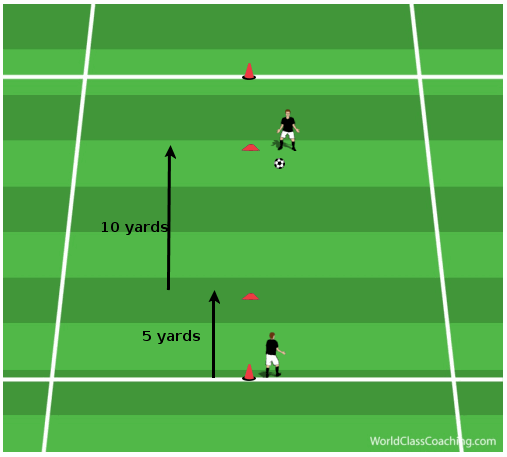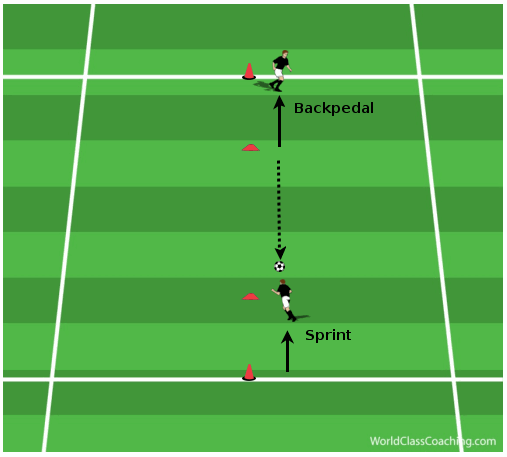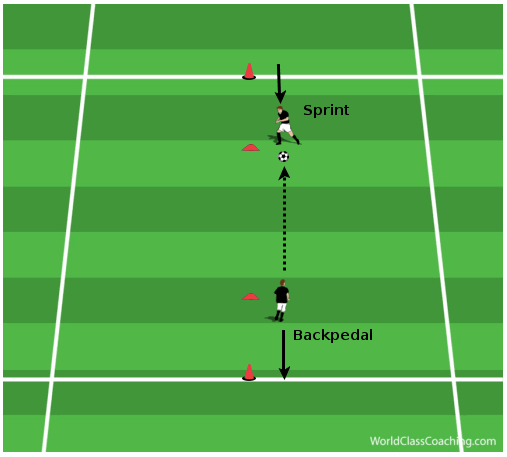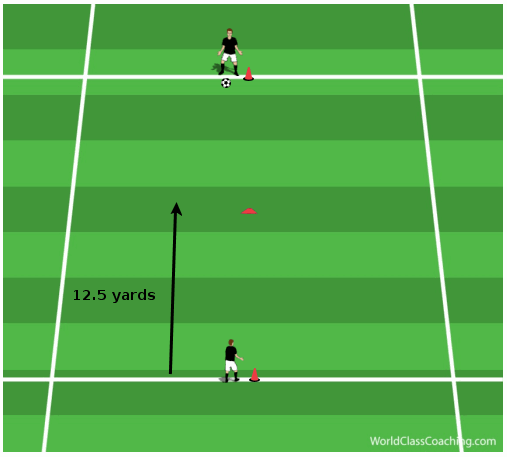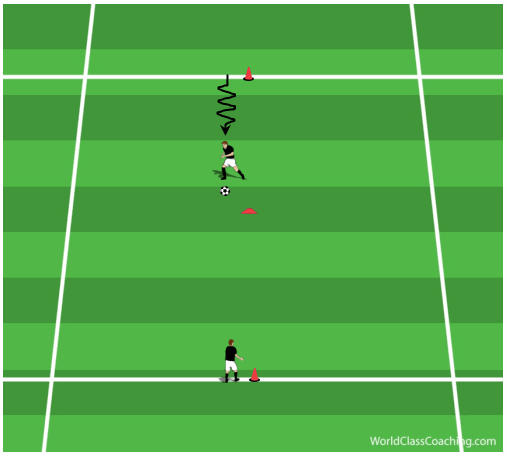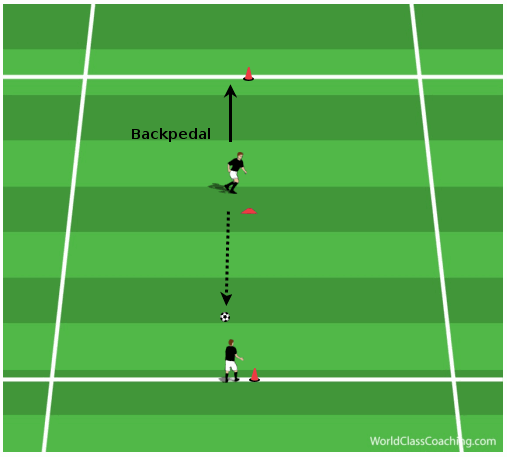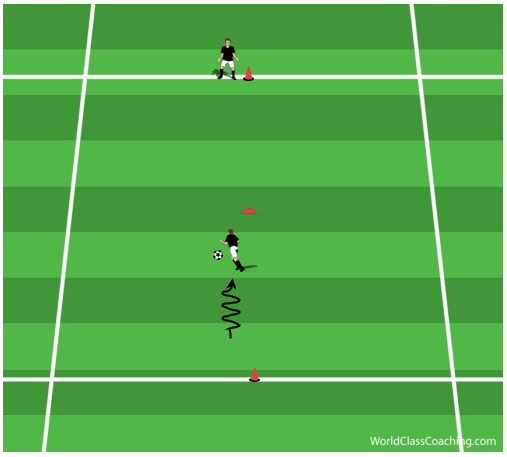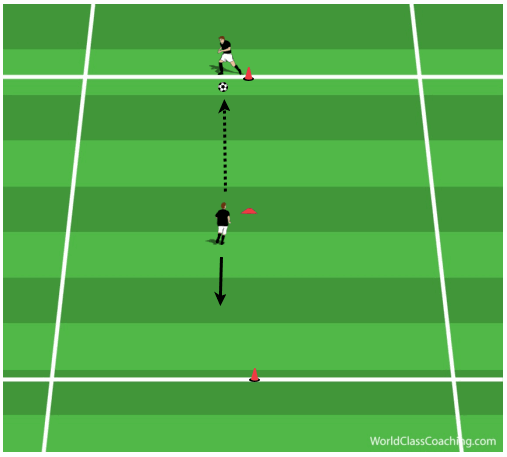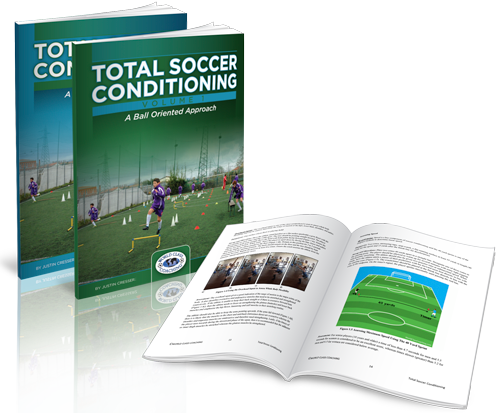By Justin Cresser - Author of Total Soccer Conditioning: A Ball Orientated Approach
When focusing on the overall agility development of your players, one of the major factors to consider is stop-and-go capability. This component of agility involves the ability to rapidly accelerate and decelerate in a variety of directions and after performing various actions. For example, picture a winger sprinting down the wing, stopping suddenly and then turning to receive a ball to feet from their central midfielder. This combination of actions involves several complex movements and requires the muscles of the body to be well trained.
The following are two simple activities that can be used to develop stop-and-go ability in your players.
They also include short passing and receiving, as well as dribbling at speed; actions that commonly occur during game situations that require good stop-and-go ability. (This exercise is especially useful for players that form part of the back four, who continuously have to drop or push when the opponents are in possession.)
Exercise 1
Set-up and Directions:
Divide your players into groups of two. Have both players stand 20 yards apart (marked by cones), facing each other. One of the players should have a ball at their feet. Place a cone 5 yards in front of each player so that the cones are 10 yards apart from each other. Have the player with the ball move to the cone in front of them (Figure 1).
Play is initiated by having the player with the ball pass it towards the cone in front of their partner. As soon as they play the pass they must immediately backpedals (at speed) towards the cone 5 yards behind them. The player receiving the ball must sprint towards the cone and attempt to control the ball before it reaches the cone (Figure 2).
The player receiving the ball takes a touch and then plays a pass back towards the cone where the initial pass was made. This player then backpedals as quickly as possible towards the cone behind them, while their partner sprints forward in an attempt to receive the pass in front of the cone (Figure 3).
Have the players continue this process for at least 45 to 60 seconds (1 set) and then rest for 60 to 120 seconds. The movement from the players should be continuous. That is, they should never be standing still at a cone, but always transitioning between sprinting and backpedaling.
Perform a total of 3 to 4 sets.
Coaching Points:
- Good body posture is required at all times. When backpedaling, the player must use short powerful steps and their bodyweight (centre of gravity) should be slightly forward. When sprinting, the first step should be short and powerful, and the player should be leaning forward slightly
- This exercise is meant to be done at speed, both while sprinting and backpedaling. So, encourage explosive steps during both motions
- The players must also attempt to transition between sprinting and backpedaling as quickly as possible. As such, foot contact with the ground should be rapid but powerful during the changeover point
- Encourage quality (accurate and properly weighted) passes from both players. Ensure that players are compact over the ball when they receive it and when they play the pass.
- You can progress this exercise by restricting the players to one touch or by increasing the distance that each player has to backpedal/sprint.
Exercise 2
This exercise can be done separately from the first, or as a progression to it.
Set-up and Directions:
Divide your players into groups of two. Have both players stand 20 to 25 yards apart (marked by cones), facing each other. One of the players should have a ball at their feet. Place a cone midway between the two players (Figure 4).
Play is initiated by the player with the ball dribbling towards the cone in the centre at speed (Figure 5).
As soon as they reach the cone, they must play a pass to the feet of their partner and then immediately backpedal until they reach back to their starting position (Figure 6).
The player receiving the ball then takes a touch and dribbles towards the cone in the centre. As before, when they reach this cone, they play a pass to the feet of their partner and then immediately backpedals towards their starting position (Figures 7 and 8).
Have the players continue this process for at least 60 to 75 seconds (1 set) and then rest for approximately 90 seconds. Perform a total of 3 to 4 sets.
Coaching Points:
- Encourage the player to dribble as quickly as possible but under control. In addition, ensure they take small touches while keeping their heads up
- The instant the pass is made, the player must transition to backpedaling by explosively pushing off with non-passing foot. Encourage the players to move as quickly as possible
- As in exercise 1, good body posture is required at all times. That is, when backpedaling, the player must use short powerful steps and their bodyweight (centre of gravity) should be slightly forward.
Variation:
You can vary this exercise in several ways. For example, you can have the dribbling player perform a variety of skills (scissors, hip fakes, etc.) while dribbling. You can also instruct the receiving player to take their first touch in a particular way.
Note: If you are using (both) these exercises in the off-season, the work-to-rest ratio should be shorter as the focus is agility and the body should be well rested in order for the player to establish proper habits. Have your players work continuously for 45 to 60 seconds and then rest for 2 minutes.
If you choose to do these exercise in the pre and in-seasons, the work to rest ratio can be increased (work for 60 seconds, rest for 60 to 90 seconds) which places greater emphasis on anaerobic conditioning. This is appropriate as the player is likely to perform these actions during a game under a state of fatigue.
Justin Cresser – Has coached soccer at various levels both in North America and abroad (Hong Kong and Africa). He is currently the Assistant Technical Director at the Soccer Club of Toronto. He has his Advanced National Diploma from the NSCAA and is also a certified strength and conditioning coach. You can check out Justin's best-selling books here.

